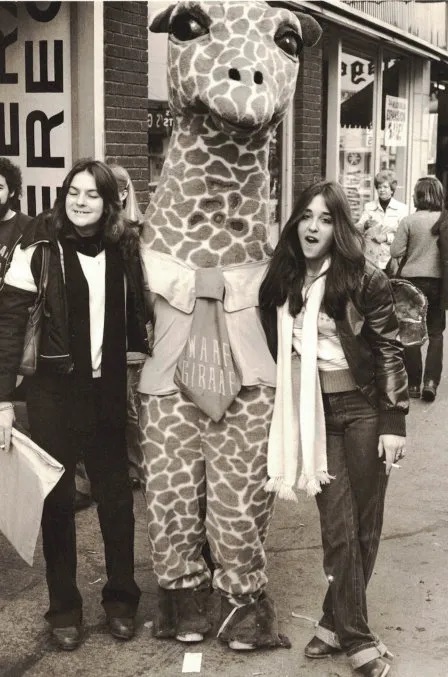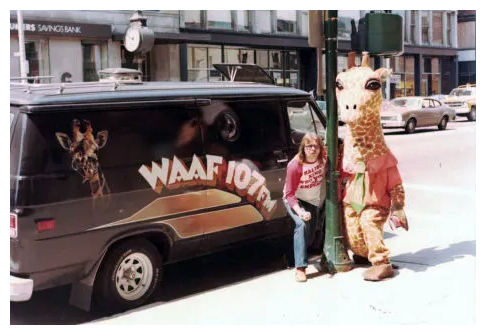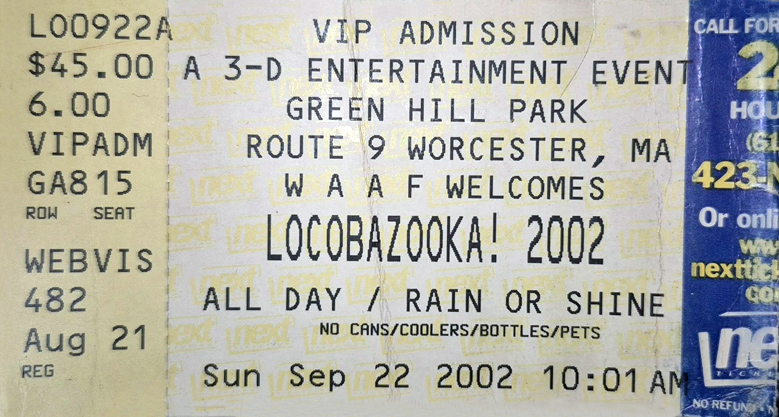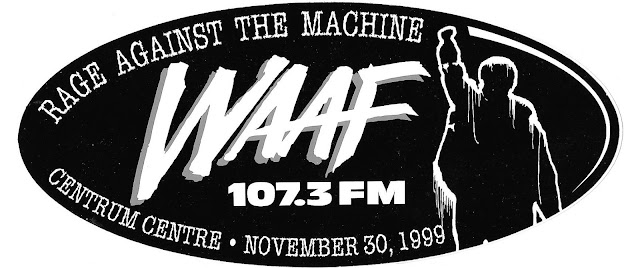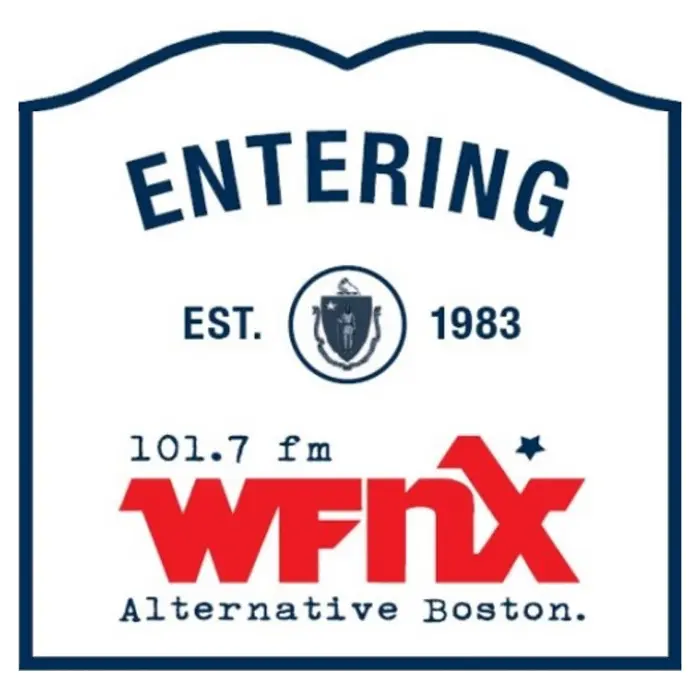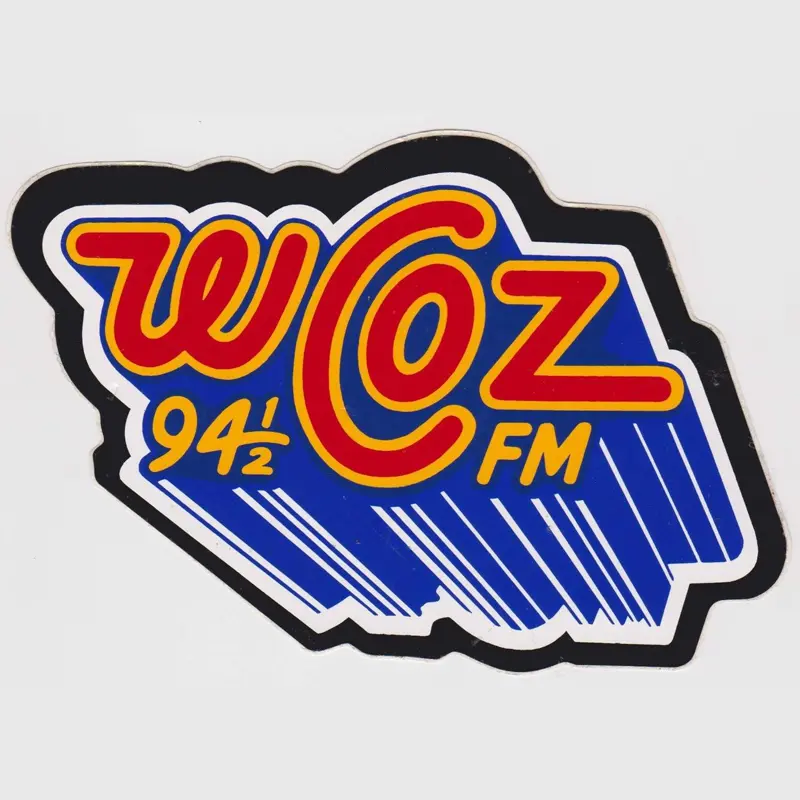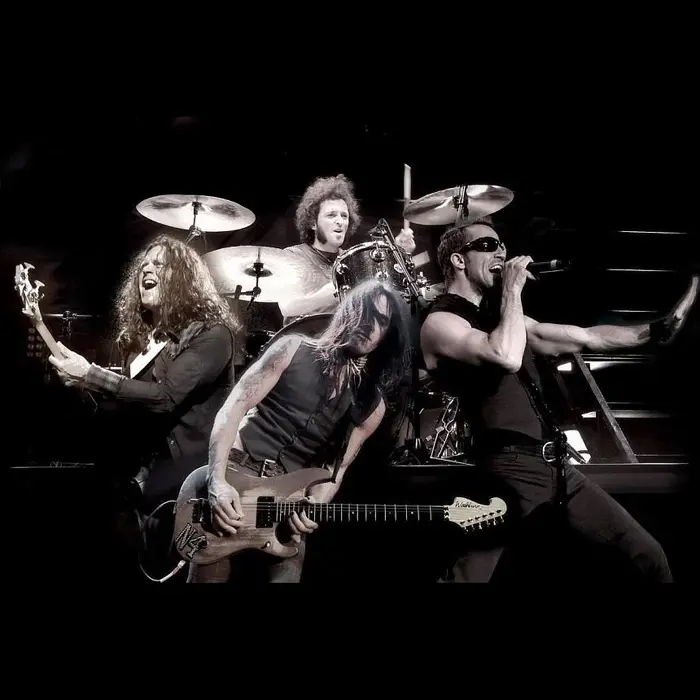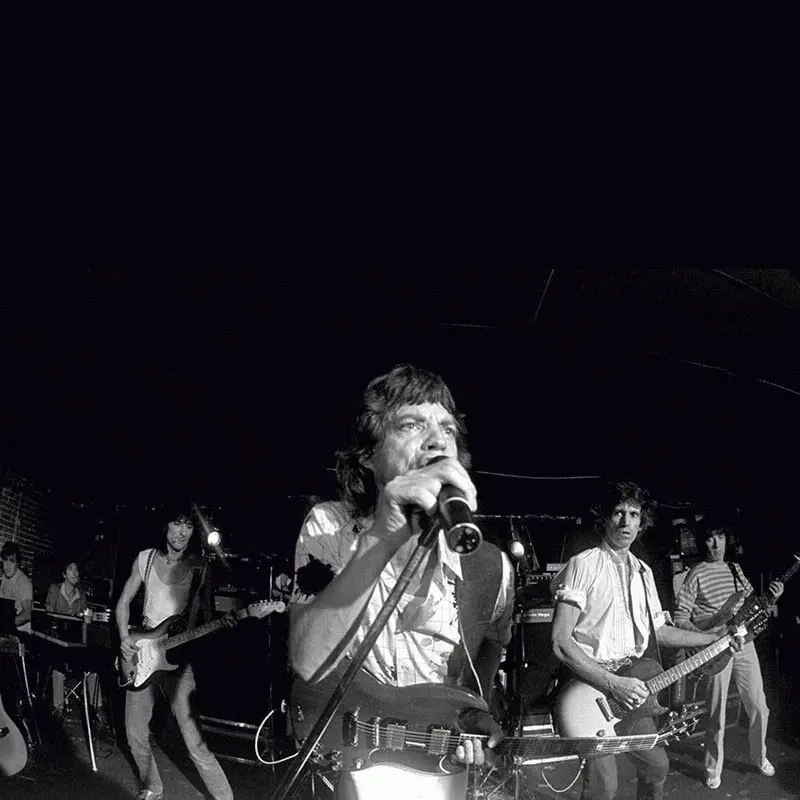WAAF
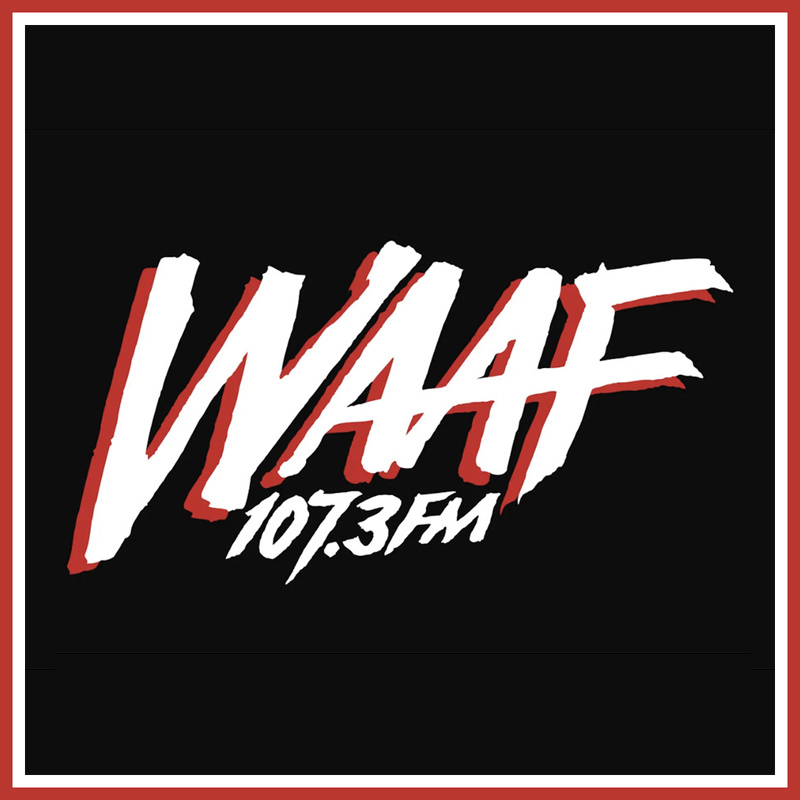
There’s a longstanding rivalry between the two biggest cities in Massachusetts, Boston and Worcester, as demonstrated in the football games between Boston College and College of the Holy Cross held between 1896 and 1987, which drew some of the most passionate crowds in the region’s sports history. And if you ask rock ‘n’ rollers from the state to name their go-to FM stations of the 1970s, ‘80s, ‘90s and early ’00s, you’ll see the rivalry reflected in the most oft-cited call letters: WBCN, founded in “The Hub,” and WAAF, founded about 40 miles west in “The Woo.”
Though a number of other stations may leap to people’s minds such as WCOZ and WFNX, ‘BCN and ‘AAF were the Bay State’s top FM-rock dogs for the better part of 40 years and their rivalry was as deep and bitter as the one between the Red Sox and the Yankees. Each one’s blend of programming, personalities and power allowed them to attract listeners from far outside their immediate areas and, though there was plenty of overlap in their audiences, they distinguished themselves from each other by focusing on somewhat different sectors of the regional rockiverse: ‘AAF was the heavier of the two in terms of programming, promoting itself as “The Only Station That Really Rocks,” while ‘BCN took a less industrial-strength path as simply “The Rock of Boston.”
“The WAAF musical focus was always hard, melodic rock,” said longtime ‘AAF staffer Bob Goodell in a 2020 interview with the Worcester-based Telegram & Gazette. “It was harder-edged songs that had a melody that you could hum, versus the heavier metal that doesn’t have as much of a melody to it. Not to say that we didn’t play some of those songs, but the focus was on the genre of Guns N’ Roses, Metallica’s “Black Album,” Red Hot Chili Peppers, Mötley Crüe and local bands Godsmack and Extreme.” One prime example of how the stations differed was in the summer of ’83, when ‘AAF put Iron Maiden’s newly issued disc Piece of Mind album into heavy rotation and ‘BCN did the same with The Police’s latest, Synchronicity.
BACKGROUND, 1970S EXPANSION, OWNERSHIP CHANGES
WAAF came on the air using a middle-of-the road (MOR) format on May 28, 1968 – 10 weeks after ‘BCN had moved from a classical format to a freeform-rock one – but its roots go back to June ‘61, when WAAB-FM signed on at 107.3. The new FM station aired through a transmitter site on Mount Asnebumskit in Paxton and simulcast WAAB-AM’s top-40-based programming until ‘67, when it introduced its own MOR (aka “easy listening,” “adult contemporary”) format.
In early ’68, WAAB’s AM and FM frequencies were acquired by newly formed WAAB, Inc., owned by Ahmet Ertegun, Nesuhi Ertegun and Jerry Wexler, who’d recently sold Atlantic Records to Warner Bros.-Seven Arts; they rebranded the FM station as “WAAF,” using call letters that a Chicago station had dropped the year before. The station’s reach extended dramatically in 1970 when a power increase from just 1,400 watts to 16,500 watts provided a signal that could be heard across most of Massachusetts and in sizable sections of Rhode Island, eastern Connecticut, southern New Hampshire and southern Vermont.
On March 16, 1970, in a move that mirrored WBCN’s two years before, WAAF changed its MOR format to a freeform-rock one, focusing on folk and folk-rock during the day and harder rock at night. Marketing itself as “The Rock of New England” and giving deejays total control over what to play, the station was acquired in ’71 by Southern Massachusetts Broadcasters, owned by George Gray, for $800,000. By the mid-‘70s, WAAF was among the top album-oriented rock stations in the Northeast and had begun using various promo gimmicks spearheaded by consultants Kent Burkhart and Lee Abrams such as “the WAAF Air Force” and a giraffe mascot cleverly called “the “WAAF GirAAF.” The station’s impressive increase in market share allowed Gray to make an impressive profit in 1976 when he sold ‘AAF to the Robert L. Williams Broadcasting Company of Massachusetts for $1.465 million.
By 1978, the station’s rise among the ranks was gaining attention among top industry execs and media outlets like The Boston Globe, whose Jeff McLaughlin highlighted ‘AAF in his “Tuned In” column in April that year. “WAAF will clearly become a factor in the rock radio battle,” he wrote. The station’s third sale of the decade came later in the year when a group of employees known as Park City Communications purchased ‘AAF, its AM counterpart WFTQ and WEZN for $3.2 million.
1980S, HARD-ROCK FORMAT, NOTABLE EVENTS, OWNERSHIP CHANGES
As the ‘80s arrived and the Reagan Era began, the ferocity of the ‘BCN-‘AAF rivalry had become as public and behind-the-scenes dirty as any presidential campaign ever launched. The most famous example came on September 14, 1981, when ‘AAF sponsored a surprise show by The Rolling Stones at Sir Morgan’s Cove in Worcester and ‘BCN tried to sabotage the gig by airing the details of the event and announcing that the venue’s official capacity was just 235. Despite such guerilla tactics, an estimated 4,000 people lined up outside the club on the night of the show hoping to get inside.
In November ’81, two months after the station’s Stones coup, Park City sold ‘AAF to Katz Broadcasting for $16 million and at the start of ’82 Katz changed the format from mainstream rock to more hard-edged rock; among the most regular tracks played were those by Led Zeppelin, Black Sabbath, Van Halen and Ted Nugent. ‘AAF had a significant presence in the Boston market by that time (though ‘BCN was still dominant, as was WCOZ at various points), thanks to popular on-air personalities including Harvey Wharfield, Annalisa, Chuck Nowlin, Tom Doyle, Bob Rivers and Peter “Zip” Zipfel.
In 1984, ‘AAF relocated from the Cocaine Realty building at 34 Mechanic Street – named for the family who owned the real estate business, the Cocaines, not for the then-ubiquitous drug – to 19 Norwich Street. After Cleveland-based broadcaster Xen Zapis took control of the station in March ‘89, he hired Bostonian John Gorman as a media consultant, which proved pivotal to the station’s image and growth. As evidence of his deep industry connections and clout, Gorman arranged for Aerosmith to play songs from their new album Pump live on ‘AAF in July ’89 – two months before the LP’s release.
1990S, MOVE TO WESTBOROUGH, THE OPIE & ANTHONY SHOW
In the early ‘90s, ‘AAF tweaked its programming to a “Rock 40” format that showcased both established and up-and-coming acts, not just the best-known ones on the scene; Gorman referred to the switch as “fine-tuning” the playlist, not changing the basic format. To maintain street cred with existing listeners and attract potential new ones, the station rebranded as “Untamed Radio,” the same slogan used by WRQK in Canton, Ohio, where Gorman also worked as a consultant.
Though a number of staff changes accompanied the format shift, the bulk of ‘AAF’s early-‘90s transition came from its far more aggressive approach to the Boston and greater-Boston markets. In 1991, the station opened a sales office in the Boston suburb of Newton, started promoting younger Boston-based acts more actively and introduced events like the annual “Walk and Rock for Change,” which debuted in ’93 and featured ‘AAF deejays hoofing it through towns all across the state to raise money for food banks. In 1994, the station left Worcester but stayed in the area, moving operations to an office park in Westborough (about 16 miles from Worcester and 34 from Boston).
Among the best-known personalities broadcasting from the new studios were Greg Hill, John “O-Zone” Osterlind, Liz Wilde and a new team from Long Island, Gregg “Opie” Hughes and Anthony Cumia, whose Opie & Anthony Show ran on ‘AAF from March ’95 until April ’98 (when they were fired after an April Fools’ Day stunt in which they announced the death of Boston Mayor Tom Menino). Hughes’ and Cumia’s three-year stint further intensified the ‘AAF-‘BCN rivalry, especially after ‘BCN’s Nik Carter began hosting the afternoon shift that went head-to-head with the duo; Cambridge native Carter, who’s Black, became the target of what many viewed as threats of physical violence from the pair, who consistently referred to him as “Disco Boy.” Carter punched back by labeling ‘AAF “the hate station in Worcester.”
MOVE TO BOSTON, 2000S, EMF ACQUISITION, FINAL BROADCAST
After several more ownership changes in the early and mid-‘90s, Philadelphia-based Entercom Communications acquired ‘AAF and a number of other local broadcasters in 1998 for $140 million. In early 1999, the station moved from its Westborough studios to the former WBMX space at 116 Huntington Avenue in Boston; it relocated again in 2001, to 20 Guest Street in the city’s Brighton neighborhood. The moves drew a mixed response from Worcesterites, some of whom thought ‘AAF had betrayed its hometown for a bigger market. “I think WAAF always got a little bit of bad rap with some people in Worcester because they felt they abandoned the city,” said former morning man Bob Rivers in a 2020 interview with the Telegram & Gazette.
At the dawn of the 21st century, ‘AAF-‘BCN rivalry remained as intense as ever, as seen in the amount of listener overlap between the two stations; according to trade journals, ‘AAF shared up to 59% of its audience with ‘BCN while ‘BCN shared some 32% of its audience with ‘AAF. The cross-pollination led to some publications, including The Boston Globe, commenting how much the two giants “sounded alike” with their use of very similar playlists and equally provocative personalities. Still, ‘BCN managed to maintain a ratings edge until its demise in August 2009, driven by factors including holding the local rights to The Howard Stern Show and its flagship status for The New England Patriots Radio Network, according to industry analysts. On August 12, 2009, the day after WBCN’s final broadcast, WAAF became the longest-running rock radio station in the Boston market .
On February 18, 2020, Entercom announced that it had sold ‘AAF to the Tennessee-based nonprofit Educational Media Foundation (EMF) for $10.75 million, ending the station’s nearly 52-year run as one of New England’s leading broadcasters. Under the agreement, the station became WKVB and was folded into EMF’s K-Love network, which airs “contemporary Christian” programming. WAAF’s final broadcast was on February 21, 2020, when Program Director Joe Calgaro, Mistress Carrie and Mike Hsu hosted a 14-hour farewell program that included Aerosmith’s Tom Hamilton, who recalled hearing the band’s ’73 classic “Dream On” on the radio for the first time while listening to ‘AAF. “That is a gift that we will never be able to repay,” said Mistress Carrie about how Entercom greenlit the extended farewell show, saying the experience was “like being awake and attending your own wake and funeral.”
“I thought, ‘Holy cow, that’s the end of an era,’” Bob Rivers told the Telegram & Gazette after hearing news of the sale to EMF. “It was like the way you’d wake up after a friend died. I thought, ‘Is that real?’ It was a very big, very respected station, a Worcester station that took on the big city and succeeded and won. The legend of having done that goes down in radio history.” Echoing Rivers’s comments was his on-air partner “Zip” Zipfel, who said ‘AAF was an “iconic” station and commented on how extremely loyal its listeners were. ““The only thing that’s certain is that change comes along,” he added. “You’ve gotta just roll with it.
(by D.S. Monahan)

